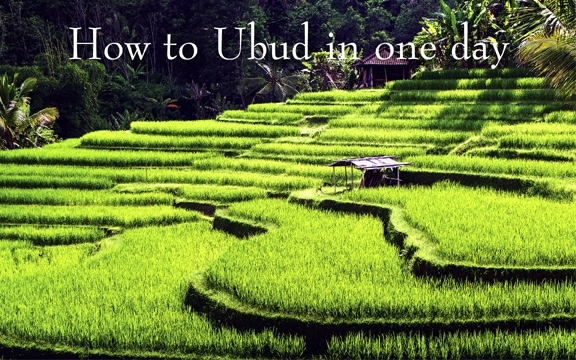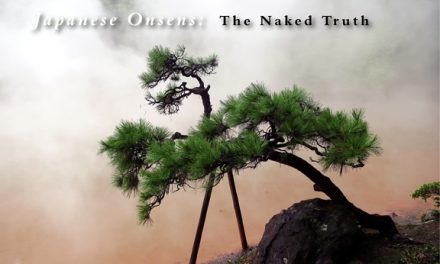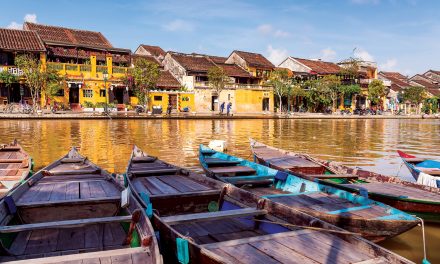Indonesia
How to Ubud in one day
Article and photography by Gregory Caltabanis

In recent times, Ubud has emerged as a bonafide hotspot in Indonesia offering tourists much to see and do and even acts as Bali’s cultural hub. Known for its traditional crafts and dances, visitors are often spoilt for choice when setting their itineraries. Whether it’s their famous Monkey Forest, the scenic rice fields or the historic temples on display, it’s important to inform yourself and diligently plan out the day or tourists risk wandering around in one of Ubud’s fourteen villages. While getting lost is a concern, one thing’s for certain: nature lovers, culture buffs and shopaholics alike rejoice over the wide array of activities on offer in this lovely city.
Let’s start with nature. Ubud’s Monkey Forest is where locals renew their contact with the spiritual world as it is located in a sacred village. Essentially, this forest is where nature, humans and the cosmos live in perfect harmony with one another and has established itself as an important part of Balinese culture and heritage.
Built in the middle of the 14th century as part of the Gelgel Dynasty, the Monkey Forest is rich in history and has three temples to visit. The Pura Dalem Agung is one of these temples and was initially created to worship God, “The Recycler.” The second temple, Pura Beji in the northwest wing, acts as a place of purification as well as physical and spiritual cleansing before ceremonies and was built for the Goddess Gangga. The third and final temple, Pura Prajapati, is adjacent to the cemeteries, however, it’s rarely used. Ngebejiang ceremonies are often held in these temples where locals join together to sing and dance.
Entrance costs visitors 50,000 IDR or about five Canadian dollars, while tourists can see over 700 Balinese long-tailed monkeys, also known as macaques but be warned; these monkeys are professional thieves! All in all, the forest is a natural reserve of over 12.5 hectares and boasts over 150 different species of trees, including the historic Pule Bandak.
After the Monkey Forest, visiting the Tegalalang Rice Terraces are a must. Like the forest, entrance costs about 50,000 IDR while locals will ask for 2,000 IDR at no more than two random checkpoints. Non-negotiable. Tegalalang Village is located north of Ubud and is approximately 600 meters above sea level. After making the trek up the mazy rice field, the view from on top is a humbling one and will make the twenty minute scooter ride more than worth it. There is frankly no bad time to go, however, try and make the trip there in the summer when the rice flower has fully blossomed. Moreover, go as early as possible and watch out for the steps as they are steep and I nearly fell.
Following a visit to the rice fields, tourists would be wise to check out Ubud’s temples. While there are many of them, King Palace acts as the focal point of the city. Located on the main Jalan Raya Ubud road and intersection, it’s at the heart of all things cultural. However, it’s important to note that due to this, King Palace gets a lot of foot traffic and packs up relatively quickly. If you go early, you will be able to take in the full scope of the Balinese art and tradition on display. There are also evening dances that take place here that are well worth a watch.
Just down the road from King Palace, tourists can also visit Saraswati Palace. Dedicated to honor the Hindu Goddess Saraswati, the Goddess of learning, literature and art, Saraswati is arguably the most aesthetic temple in the city. On either side of the path inside the temple, there are vast water gardens filled with lotus ponds. What will strike you most about this temple, however, is the sheer symmetry of the natural view. There is no entrance fee for both these temples, making it all the more accessible.
After visiting Ubud’s forest, temples and rice fields, your final stop should be Tegenungan Waterfall. Located about 10 kilometres outside of the city, this waterfall is one of the few waterfalls in all of Indonesia not situated in highlands or mountains. Fair warning – It’s quite the workout. To get to the top, you need to climb up 170 steps and cross two bamboo bridges. The bridges and steps are sturdy, but you would be wise to watch your footing as the sandy terrain and rocks could get slippery. The waterfall itself is about 25 metres high while the water is swimmable if you’re an adept swimmer but there is a strong current. Entrance costs 15,000 IDR ($1.50) and a further 10,000 IDR ($1.00) if you want to go all the way up.
All in all, these activities are all doable over the course of a day as they are all relatively near each other and affordable. A trip to Bali would feel incomplete without visiting Ubud as tourists would miss out on over seven centuries of Indonesian culture, history and nature. Included in the price, a leg day workout and a day you will never forget.
www.indonesia-tourism.com
Click on cover to view published article






